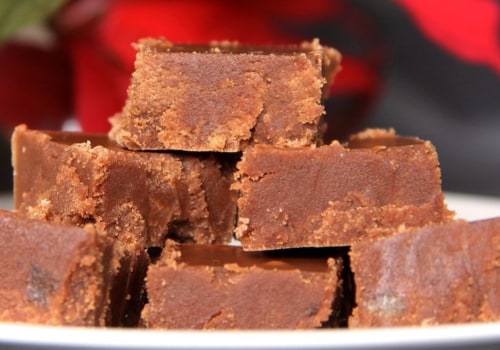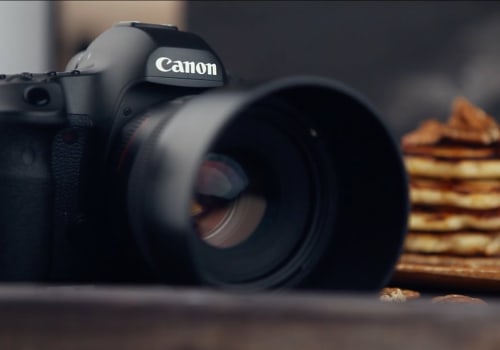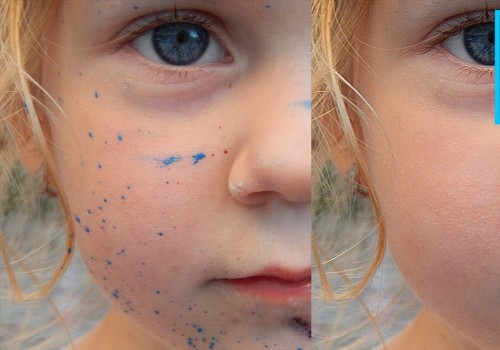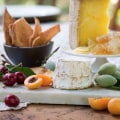Are you looking to take your food photography to the next level? If so, then investing in a macro lens may be just what you need. Macro lenses allow you to capture detailed close-ups of your food, giving you much more creative freedom and allowing you to explore the beauty of food in greater detail. In this article, we'll take a look at the different types of macro lenses available, as well as some tips on how to make the most of your macro lens for food photography.
Choosing the Right Macro Lens
When it comes to food photography, choosing the right macro lens can make a huge difference in the quality of your images. The most important factor to consider when selecting a macro lens is maximum magnification.Most macro lenses have a maximum magnification of 1x, meaning they can reproduce an object at its actual size or greater. This allows you to capture highly detailed shots of food. Additionally, you should consider the focal length of the lens and its image quality. A longer focal length will allow you to capture more distant subjects, while a higher image quality will result in sharper and more vibrant photos. When selecting a macro lens, it's important to take into account your specific needs and the type of food photography you plan to do.
For example, if you plan to shoot close-up shots of small objects such as fruits and vegetables, a lens with a maximum magnification of 1x or higher will be ideal. If you plan to shoot larger subjects such as cakes or dishes, a lens with a longer focal length will be necessary. Finally, be sure to examine the image quality of the lenses you're considering as well, as this will ultimately determine the overall quality of your photos.
Benefits of Using Macro Lenses for Food Photography
Macro lenses are designed to help you capture the tiniest details of your food photography subject, making them an essential piece of equipment for food photography. Macro lenses allow you to capture images with an extremely shallow depth of field, which isolates the subject and blurs the background, creating a beautiful bokeh effect.Additionally, macro lenses can capture amazing levels of detail, allowing you to capture even the smallest details of your food photography subject. Using a macro lens also allows you to get close to your subject, something that is often difficult to do with other types of lenses. This close proximity allows you to capture the smaller details of your food photography subject that may otherwise be missed with a standard lens. Additionally, shooting with a macro lens can help create unique perspectives and compositions that can be difficult to achieve with other lenses.
Finally, macro lenses offer great versatility for food photography. With some macro lenses, you can switch between manual and autofocus modes, making it easier to capture your desired shots. Additionally, some macro lenses offer the ability to use a wide variety of filters, allowing you to experiment with different effects and styles.
Types of Macro Lenses
When it comes to macro lenses for food photography, there are two main types you can choose from: prime lenses and zoom lenses.Prime lenses are fixed focal length lenses, which means they can't be adjusted to change the field of view. This makes them ideal for close-up work as they give you the sharpest image possible. Zoom lenses, on the other hand, allow you to adjust the field of view and they're great for capturing different perspectives. Prime lenses are generally considered to be the best choice for food photography because of their superior image quality and their ability to capture sharp details.
They also tend to have a wider maximum aperture, which allows you to get more light into the lens, making it easier to capture those all-important details. However, prime lenses can be expensive and are usually quite heavy. Zoom lenses, on the other hand, offer more versatility as you can adjust the focal length to suit the situation. They are also usually lighter and more affordable than prime lenses.
However, they don't usually offer as much image quality as prime lenses and they don't allow you to capture as much detail. When choosing a macro lens for food photography, it's important to consider your budget, the type of photos you want to take, and the weight of the lens. Prime lenses are generally considered to be the best choice for capturing detailed close-up images, but if you're on a budget or need more versatility then a zoom lens may be a better option.
Tips on Using Macro Lenses for Food Photography
Tripod: A tripod is essential when using a macro lens for food photography, as it helps to reduce camera shake and keep the image sharp. A tripod also allows you to experiment with shutter speed and aperture settings, giving you more control over the shot.When using a tripod, make sure to adjust the height so that your camera is level with the food you’re photographing. This will help to ensure that you capture an even and balanced image.
Shutter Speed
: Experimenting with shutter speed can be a great way to get the most out of your macro lens. When shooting food, try using a slower shutter speed to capture more detail in the food.A slower shutter speed will also help to create a sense of motion in your photos, which can be a great way to add interest and drama to your images. For best results, it’s important to find the right balance between shutter speed and aperture. Too slow of a shutter speed can cause motion blur, while too fast of a shutter speed can cause the image to be too sharp and lack detail.
Aperture
: The aperture setting on your macro lens will have a big impact on the final image.A wider aperture (f/2.8 or lower) will allow more light into the lens and create a shallow depth of field. This can be great for making the food stand out from its background and creating a dreamy look in your photos. On the other hand, using a narrow aperture (f/8 or higher) will give you more depth of field, allowing you to focus on both the foreground and background of your image. This can be great for capturing more context in your photos. Macro lenses are essential for food photography, as they allow you to capture stunning close-up images of food.
There are several different types of macro lenses available, each offering different benefits and features. When choosing a macro lens, it is important to consider your specific needs and budget. Additionally, there are several tips and techniques that you can use to improve your food photography when using a macro lens. All in all, macro lenses can greatly enhance your food photography and help you take more creative and interesting shots. Using a macro lens for food photography is essential to create stunning close-up images of food.
There are various types of macro lenses available, each offering its own benefits, so it's important to choose the right one for your needs. Additionally, there are several tips to consider when using a macro lens for food photography to ensure the best results. Ultimately, macro lenses will help improve your food photography, so it's worth investing in one.








Leave a Comment